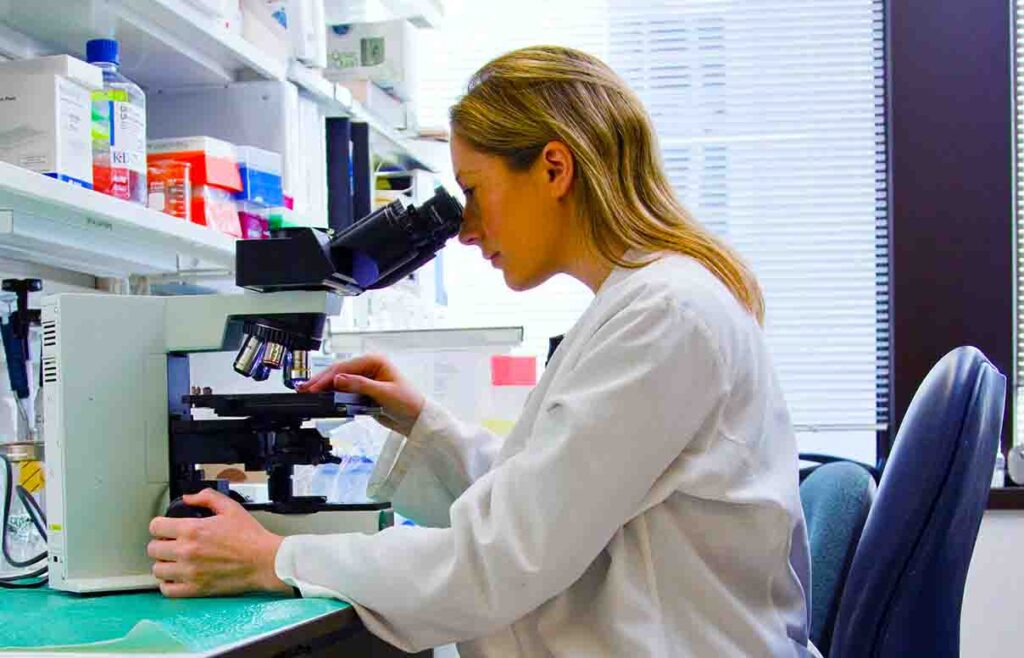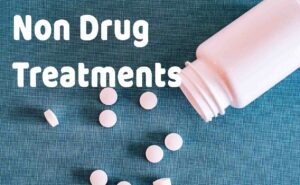Best Primary Secondary and Tertiary Prevention of Mental Illness
Mental health is a vital aspect of our overall well-being, and taking appropriate measures to prevent the onset or progression of mental illnesses is crucial. This is where primary, secondary, and tertiary prevention strategies come into play. By addressing risk factors, recognizing early signs, and minimizing the impact of mental illnesses, these prevention methods can help maintain a healthy mind. In this comprehensive guide, we’ll delve into the best primary, secondary, and tertiary prevention strategies that can help prevent mental health conditions.
Prioritizing mental health and taking preventive measures can significantly enhance the quality of life and overall well-being. There are three types of prevention strategies – primary, secondary, and tertiary – that can be implemented to promote mental well-being. Awareness is also a crucial factor in prevention, and it plays a vital role in identifying early warning signs and taking necessary action. In this context, let us explore the different strategies that can help prioritize mental health and well-being.

Primary Prevention
Primary prevention is a crucial approach to reducing the incidence of mental health conditions. It aims to prevent mental health problems from occurring by addressing risk factors and promoting mental well-being.
Effective primary prevention strategies involve a wide-scale implementation of measures that can have a positive impact on the mental well-being of populations. Examples of such measures are:
| Preventive measures | Description |
|---|---|
| Public awareness campaigns | Efforts aimed at educating the general public about mental health, including reducing stigma and increasing access to information and resources. |
| Social and emotional learning programs | A structured program aimed at developing social and emotional skills in children and adolescents, including self-awareness, self-regulation, and relationship building. |
| Environmental interventions | Changes made to community or workplace environments that promote health and well-being, such as increasing access to green spaces and improving lighting and ventilation. |
| Early childhood interventions | Programs and services aimed at promoting healthy development in children, including access to high-quality education, healthcare, and social services. |
The implementation of primary prevention strategies is critical for reducing the occurrence of mental health conditions in populations. By prioritizing mental well-being and promoting preventive measures, we can create healthier communities and reduce the burden of mental health issues on individuals and society.
Primary Secondary and Tertiary Prevention of Mental Illness
Secondary Prevention
Secondary prevention aims to identify and intervene early in individuals who are at risk or show early signs of mental health issues. The objective is to prevent the progression of these issues and reduce the severity of symptoms.
Various strategies can be used for secondary prevention:
Screening Programs
Screening programs are an essential aspect of secondary prevention. These programs aim to identify individuals who are at risk of developing a mental health issue or are currently experiencing symptoms. Mental health professionals typically conduct screenings to detect early signs of mental illness. Regular screening can help detect mental health issues early and allow for timely intervention.
Talking Therapies
Talking therapies, such as cognitive-behavioral therapy (CBT), can be an effective method to prevent the progression of mental health issues. CBT is a type of therapy that focuses on identifying and changing negative beliefs and thought patterns. By addressing these negative thoughts, individuals can develop positive coping mechanisms and reduce the severity of symptoms.
Medication
Medication can also be effective in preventing the progression of mental health issues. Antidepressants, antipsychotics, and mood stabilizers are commonly used to manage symptoms and reduce their severity. It is important to note that medication should be used in conjunction with other interventions, such as talking therapies, to achieve the best results.
Support Groups
Support groups can be beneficial for individuals experiencing mental health issues. These groups provide a safe and supportive environment where individuals can connect with others in similar situations. Group therapy can help individuals develop coping mechanisms and provide a sense of community and belonging.
Secondary prevention is crucial in addressing mental health issues. Early detection and intervention can prevent the progression of these issues and improve overall mental well-being.
Primary Secondary and Tertiary Prevention of Mental Illness
Tertiary Prevention
Tertiary prevention focuses on the management and treatment of individuals who have been diagnosed with a mental health condition. The goal is to reduce the impact of the condition and improve the overall quality of life for the individual.
Effective tertiary prevention strategies for mental illness include:
| Tertiary Prevention Strategies | Description |
|---|---|
| Medication management | Prescribing and monitoring medication to manage symptoms and minimize their impact on an individual’s daily life |
| Therapy and counseling | Providing support and guidance for individuals to manage their thoughts, emotions, and behaviors |
| Case management | Coordinating and navigating resources and services on behalf of the individual to ensure they receive comprehensive and appropriate care |
| Peer support programs | Connecting individuals with peers who have shared experiences to provide emotional support and guidance |
It is essential to note that tertiary prevention is not a singular approach and must be customized to accommodate the individual’s unique needs. Early intervention and ongoing support can improve outcomes for individuals experiencing mental illness.
By implementing effective tertiary prevention strategies, individuals with mental illness can achieve long-term stability and improve their overall quality of life.

Primary Secondary and Tertiary Prevention of Mental Illness
Integrating Primary, Secondary, and Tertiary Prevention
While primary, secondary, and tertiary prevention strategies for mental illness aim to address prevention at different stages, it is important to integrate these strategies for a comprehensive approach to mental health. By doing so, we can reduce the prevalence and impact of mental health conditions and improve overall mental well-being.
Primary prevention, which aims to promote mental well-being and address risk factors across populations, can work together with secondary prevention methods, which identify and intervene early in individuals who are at risk or show early signs of mental health issues. This early detection and intervention can prevent the progression of mental illness and improve outcomes for individuals.
Tertiary prevention strategies can also be integrated into the approach, which focuses on improving the quality of life for individuals who are already diagnosed with a mental health condition. Through interventions and support systems, individuals can manage their mental health conditions effectively and reduce the impact of their illness.
An integrated approach to mental health prevention can also promote early detection and intervention, reducing the overall burden of mental health conditions. It emphasizes the importance of mental health awareness, as well as addressing risk factors and providing appropriate support and interventions at different stages.
Examples of Integrated Approaches
| Approach | Example |
|---|---|
| Primary and secondary prevention | A school-based program that promotes mental well-being and provides early intervention for students showing early signs of mental health issues. |
| Secondary and tertiary prevention | An outpatient clinic that provides early detection and intervention for individuals with mental health issues, as well as ongoing support and interventions for those diagnosed with a mental illness. |
| Primary, secondary, and tertiary prevention | A community-based program that promotes mental well-being, identifies individuals at risk and provides ongoing support and interventions for those diagnosed with a mental illness. |
As demonstrated by these examples, an integrated approach to mental health prevention can take many forms and can be tailored to the needs of different populations. By prioritizing mental health and implementing prevention measures at different stages, we can work towards a future with improved mental well-being for all.
Primary Secondary and Tertiary Prevention of Mental Illness
Promoting Mental Health Awareness
Promoting mental health awareness is a crucial preventive measure in reducing the prevalence and impact of mental health conditions. The lack of understanding and negative attitudes towards mental illness can often prevent individuals from seeking help or support. By increasing public knowledge and reducing stigma, we can encourage early detection, effective interventions, and overall mental well-being.
The Benefits of Mental Health Awareness
When individuals are aware of the signs and symptoms of mental illness, they are more likely to seek help, which can lead to early diagnosis and effective treatment. Increased understanding and awareness also reduce the stigma surrounding mental illness, making it easier for individuals to talk openly about their mental health and seek support without fear of judgment or discrimination.
The Role of Education in Promoting Mental Health Awareness
Education is a critical tool in promoting mental health awareness. Providing accurate information and resources can help individuals recognize the early signs of mental illness and seek appropriate support. Education can also help to reduce stigma by challenging negative attitudes and beliefs surrounding mental illness.
Ways to Promote Mental Health Awareness
| Strategy | Description |
|---|---|
| Social Media Campaigns | Using social media platforms to share information and resources about mental health and mental illness. |
| Public Events | Organizing events to raise awareness and reduce the stigma surrounding mental illness. |
| Community Programs | We are creating programs and support groups to provide information and resources about mental health and mental illness. |
| Workplace Policies | Implementing workplace policies that prioritize mental health and provide employees with resources and support. |
The Importance of Language
The language we use to talk about mental illness can have a significant impact on reducing stigma and promoting mental health awareness. Using person-first language, such as “a person with a mental health condition,” instead of “mentally ill,” can help to reduce the negative associations often associated with mental illness.

Mental Health Promotion and Illness Prevention
Conclusion on Primary Secondary and Tertiary Prevention of Mental Illness
It is evident that prioritizing mental health and implementing prevention measures can have a significant impact on reducing the prevalence and impact of mental health conditions. By understanding and implementing primary, secondary, and tertiary prevention strategies, we can take steps to prevent the onset or progression of mental health conditions.
Primary prevention strategies aim to address risk factors and promote mental well-being across populations. In contrast, secondary prevention aims to identify and intervene early in individuals who are at risk or show early signs of mental health issues. Finally, tertiary prevention focuses on reducing the impact of mental illness and improving the quality of life for individuals already diagnosed.
Integrating all three levels of prevention can have a positive impact by reducing the burden of mental health conditions. By promoting mental health awareness and reducing stigma, we can also contribute to early detection, effective interventions, and overall mental well-being.
It is crucial to prioritize mental health and take action today to prevent the onset or progression of mental health conditions. By doing so, we can make a positive impact on society and improve the quality of life for individuals living with mental health issues.
Primary Secondary and Tertiary Prevention of Mental Illness
FAQ
What is the primary prevention of mental illness?
Primary prevention refers to strategies that aim to address risk factors and promote mental well-being across populations. These measures focus on preventing the onset of mental health conditions before they occur.
What is secondary prevention of mental illness?
Secondary prevention involves identifying and intervening early in individuals who are at risk or show early signs of mental health issues. The goal is to detect and treat these conditions in their early stages to prevent their progression.
What is tertiary prevention of mental illness?
Tertiary prevention strategies focus on reducing the impact of mental illness and improving the quality of life for individuals who have already been diagnosed. These interventions and support systems aim to help manage mental health conditions effectively.
Why is it important to integrate primary, secondary, and tertiary prevention strategies?
Integrating these prevention strategies is crucial as it allows for a comprehensive approach that addresses prevention at different stages. By combining efforts across all levels, we can have a significant impact on reducing the burden of mental health conditions.
How does promoting mental health awareness contribute to prevention?
Promoting mental health awareness plays a vital role in prevention. Increasing public knowledge and reducing stigma can lead to early detection, effective interventions, and overall mental well-being.
What should I do to prioritize my mental well-being?
To prioritize your mental well-being, it is essential to practice self-care, seek support when needed, and maintain a healthy lifestyle. Additionally, staying educated about mental health and promoting awareness can contribute to your well-being and that of others.
Primary Secondary and Tertiary Prevention of Mental Illness


